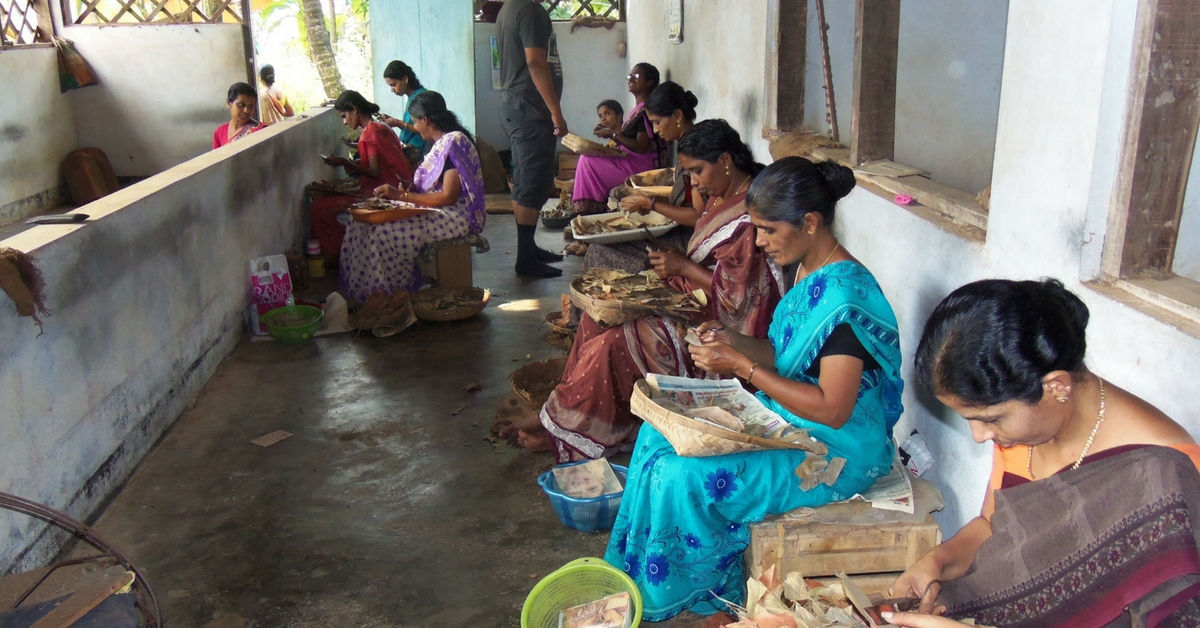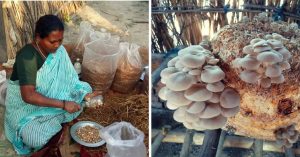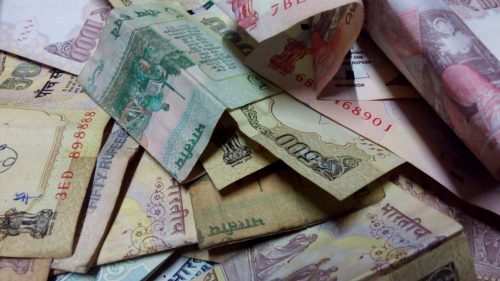TBI Blogs: Here’s How the Govt Hopes to Help Low-Income Workers in India Build Their Own Houses
The Government has released the guidelines for the Revised Integrated Housing Scheme, 2016 to extend housing subsidies to workers from various industries, including mining and beedi-making. Srujana Bej from Factly explores the actual impact of the increased subsidies.

The Government has released the guidelines for the Revised Integrated Housing Scheme, 2016 to extend housing subsidies to workers from various industries, including mining and beedi-making. Srujana Bej from Factly explores the actual impact of the increased subsidies.
Recognising the need for state support in enabling citizens to realise the right to adequate shelter, a fundamental right under Article 21 of the Indian Constitution, the Ministry of Labour and Employment released the guidelines for the Revised Integrated Housing Scheme, 2016.
Who are the intended beneficiaries?
The scheme initially started for the Beedi/Non-Coal mine workers in the year 1989. After increasing the central subsidy multiple times, the scheme was named the Revised Integrated Housing Scheme (RIHS) for the first time in 2004. The scheme was further revised in 2007. The current scheme is a modified version of the earlier one, with an increase in the subsidy amount.
The intended beneficiaries of the scheme are workers in iron ore mines, manganese ore mines, chrome ore mines, limestone ore mines, dolomite ore mines, mica mines, beedi industries, and cine industries.

Similar Story

How Mushroom Cultivation Is Changing the Fortunes of Women in Rural India
Chattisgarh’s tribal communities, with limited job and economic opportunities, saw a significant chance when an organisation offered to train tribal women in starting a mushroom cultivation business. Jayashiree Elango explores further.
Read more >
The following are the mandatory conditions beneficiaries must meet to avail this scheme:
- Should be registered with the Labour Welfare Organisation.
- Have Aadhaar registration.
- Possess a Jan Dhan bank account.
- Have land in their name, or own land along with other family members, or have been allotted or leased land by the State government or Gram Sabha. (The land must be at least 60 sq. m. in area. However, exceptions can be made for EWS/SC/ST members who are required to follow the standards and specifications enlisted in the Pradhan Mantri Awaas Yojana.)
- Do not own any other pucca house in Indian territory in their own, their spouse’s, or their dependent’s name (even after submitting their application)
- Have not availed any housing subsidy in the past from either the Central or the State Government in their name or their spouse’s name or their dependent’s name.
![Beedi factory near Nileshwaram, Kerala, India. (Source: By Dereleased [CC0 or CC0], via Wikimedia Commons)](https://en-media.thebetterindia.com/uploads/2017/01/Beedi_factory_near_Nileshwaram_Kerala_India-500x333.jpg)
What is the Entitlement?
The scheme provides a subsidy amount of Rs. 1.5 lakh to the beneficiary to construct only one house during their lifetime. The house must be constructed within 18 months, and must adhere to local building regulations.
The subsidy amount is released in 3 stages through Direct Benefit Transfer— 25 % in advance (Rs. 37,500), 60 % on reaching the lintel level (Rs. 90,000), and 15 % after completion of construction and report of inspection by the Labour Welfare Organisation (Rs. 22,500).
Beneficiaries don’t require a deposit to avail the subsidy, and they can seek loans or financial assistance from legal sources even after availing the subsidy. If the beneficiary uses the subsidy amount to obtain a bank loan, then the bank can release the full subsidy amount in one transaction to the beneficiary’s Jan Dhan account in the same bank.
There is no upper limit to the floor area of the house. However, the beneficiary must adhere to a minimum floor area of 30 sq. m. in metropolitan areas and 60 sq. m. in rural and other city areas.
The beneficiary cannot sell or transfer the house until 15 years have lapsed after complete construction of the house. The only exception is when the law transfers the house to legal heirs after the death of the beneficiary. This legal heir will not be eligible for any further housing subsidy even if he/she is an eligible applicant.

The Application Process
The State Level Screening and Monitoring Committee, which the Welfare Commission will chair, will monitor and guide the application process and implementation of the scheme. At the beginning of the Financial Year, the Committee will indicate the number of housing units for States. The Committee will base this on pro-rata calculation of beneficiary, expected expenditure, and number of workers in the region.
Until online application forms are available, the worker must fill and submit hard-copy application forms to the nearest Labour Welfare Organisation or the office of Welfare Commissioner, whichever is available and closer. The receiver will give an acknowledgement slip with the date and time of receipt of application to the worker. This is important because the scheme operates on a first-cum-first-serve basis.
The concerned authorities will then send the application to the Welfare Commissioner’s office (in case the Welfare Commission does not receive the application), which will verify the original documents attached to the application form. The office will prepare an electronic record of applications. It will follow this by an on-site verification of the land and other particulars to identify eligible beneficiaries.
Thereafter, the authorities will electronically formulate a priority list for persons with disability of 40 % or more and transgender citizens, households with women heads(including widows), and others. The Welfare Commissioner shall send a regional proposal, along with recommendations, to the Director General – Labour Welfare for administrative approval and release of subsidy.

Similar Story

Burnout to Balanced: Here’s How Your Office Can Ensure You Are All Happy of Mind
Work-related stressors play a big part in causing or exacerbating mental health illnesses, and most workplaces are not equipped to deal with these issues.
Read more >
In the final list, 3 % of the applications must be from persons with disability (including 1 % from transgenders), 50 % of the applications must be from households with women heads, and 47% of the applications must be from others. The Welfare Commissioner’s office must also put up a copy of the final selection list online and paste it on its notice board. The office must also accordingly display a waiting list of up to 25 %. People can present grievances to the Welfare Commissioner.

Standards and Specifications
The constructed house must:
- Have a road connection.
- Have basic facilities such as electricity, drinking water, sanitation, and water storage.
- Include at least two bedrooms or hall with kitchen, a bathroom, a toilet, and a closet for drying clothes.
- Comply with earthquake-resistance norms formulated by the Central Building Research Institute.
- Have an estimated life of at least 50 years.
Previous Schemes
The Central Government first started a housing subsidy scheme in 1989 for beedi and non-coal mine workers with a subsidy of Rs. 1,000. Revisions in 1994, 2001, and 2004 eventually raised the subsidy to Rs. 40,000. The 2007 scheme required that beneficiaries have their own land for constructing a house, and mandated that each house have a floor area of 160 sq. ft. (nearly 15 sq. m.), with a living room, a closeted cooking space, a bathroom, and a toilet.
The scheme itself notes that a revision was necessary, as previous houses were poor in quality, incapable of withstanding natural disasters, and insufficient to accommodate the average household.
If you found our stories insightful, informative, or even just enjoyable, we invite you to consider making a voluntary payment to support the work we do at The Better India. Your contribution helps us continue producing quality content that educates, inspires, and drives positive change.
Choose one of the payment options below for your contribution-
By paying for the stories you value, you directly contribute to sustaining our efforts focused on making a difference in the world. Together, let’s ensure that impactful stories continue to be told and shared, enriching lives and communities alike.
Thank you for your support. Here are some frequently asked questions you might find helpful to know why you are contributing?


The present scheme has substantially increased the subsidy amount, removes the upper limit on the estimated construction costs of the house, mandates Aadhaar registration for Direct Benefit Transfer, and no longer requires a minimum contribution of Rs. 5,000 from the beneficiaries.
![Source: By Mennonite Church USA Archives (Constructing housing, India, 1961) [No restrictions], via Wikimedia Commons](https://en-media.thebetterindia.com/uploads/2017/01/Constructing_housing_India_1961_16902610746-500x378.jpg)
What are the issues then?
In response to a question in the Lok Sabha, the Ministry of Labour and Employment reported that the government had allocated a fund of Rs. 55.12 crores for the Financial Year of 2016-17 to aid in providing housing facility to about 14,000 workers. However, certain issues persist:
- Mandatory Aadhaar Registration – The scheme requires beneficiaries to have Aadhaar registration. However, the UIDAI itself noted that the biometric system will exclude people in hard labour due to poor fingerprint quality.
- High Penalty – There is a high penalty if houses don’t meet prescribed standards, or construction takes longer than 18 months. The government will recover the amount of subsidy, along with the high interest of 14.5 % p.a. (or as the government determines), from the beneficiary as arrears of land revenue. It might be difficult to construct the house with the given specifications using the subsidy amount alone.
- Low Awareness – The government’s expectation to reach about 14,000 workers seems a little far-fetched. The number of beneficiaries of the scheme is on a downward spiral. As per the data shared in the Lok Sabha, beneficiaries reduced from 12,323 in 2013-14 to 8,990 in 2015-16. Almost 83 % of the scheme’s beneficiaries since 2013-14 are just from Bihar, Madhya Pradesh, and Odisha.
Despite such schemes and subsidies, affordable and sustainable housing remains a major problem for a large percentage of India’s population. Organisations like Shelter Associates work tirelessly to facilitate improved housing and essential services to raise living conditions of India’s poor.
Contact Shelter Associates to find out more about how you can contribute to their efforts.
Featured Image is for representation purpose only.
Like this story? Or have something to share? Write to us: [email protected], or connect with us on Facebook and Twitter.
NEW: Click here to get positive news on WhatsApp!
This story made me
-
97
-
121
-
89
-
167










